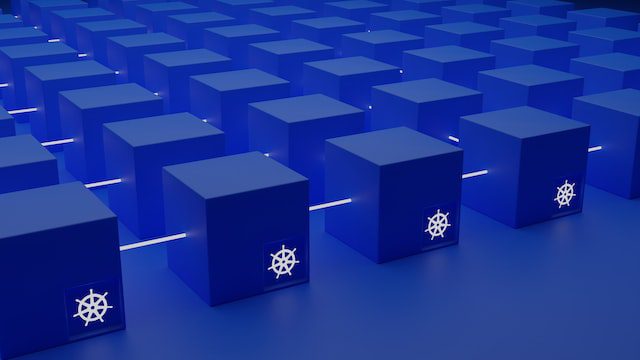You would have heard a lot about the benefits of microservices. And why not? This application model offers some significant advantages over the monolith model. This is why many companies are moving to the microservices model.
According to Markets and Markets, the application modernization market is expected to reach $24.8 billion by 2025 from $11.4 billion in 202, at a CAGR of 16.8%. The numbers show that many people are shifting to a microservices model.
But how do you shift from a monolithic codebase to one that takes advantage of microservices architecture? This guide will walk you through the transition and give tips for ensuring your codebase is ready for the change.
Why Shift to a Microservices Model?
When you shift from a monolith to a microservices model, you’re making the following key changes:
- You’re shifting from one application that handles every feature of your product to multiple applications with different functionality. Each microservice is responsible for performing a single function, like storing user data or sending email notifications.
- Deploying new features becomes easier and faster because you don’t have to deploy your entire app. Instead, you can deploy any number of individual features at once by adding them to each corresponding microservice. This also allows for greater flexibility in scaling up or down only what’s necessary, depending on demand and usage patterns at any given time, which is a huge benefit.
- Microservices offer better monitoring and debugging capabilities because they’re smaller pieces of code that are easier to understand. For example, suppose there’s an issue with an API call returning incorrect data from one service but not another service that both call this API. In that case, it may be hard to determine where exactly the issue lies without proper tools because the source code isn’t readily available for inspection by developers outside those organizations’ walls.
Shifting from monolith to microservices is seamless. According to a recent survey titled “Microservices Adoption in 2020,” around 92% of adopters claim that they have had at least some success in microservices migration. However, the survey says that below 10% of respondents claim to get complete success.
Hence, hiring a managed IT services provider is best if you are looking for complete success. A managed service provider will have the right experience to help get you started. It can help you identify services that should be migrated first. Moreover, it will also help you build a migration strategy you can rely on.
A managed IT service provider like IS-T can help you with that. The company has several years of experience in offering IT services and can provide you with end-to-end support. Moreover, it offers 24/7 support so that your microservices adoption is not interrupted. You can choose someone like IS-T to ensure you get complete success in microservices adoption and not only some.
How to Make the Shift
Now that you know why to move to the microservices model, here’s how to do it.
Prioritize Services for Migration
Now that you know what it takes to migrate to a microservices model, it’s time to start thinking about your first migration.
You’ll want to identify the most critical services for business success and prioritize those for migration. You can do this by looking at the following:
- Dependencies on other services
- Traffic on each service
- Number of customers using each service
Engineer Code Into Microservices
If you have a monolith and want to shift to microservices, then your engineers will need to code into microservices. This can be done with the three steps below:
- Identify the modules in your monolithic application that can be split into microservices. These modules are the ones that are mostly independent of each other and do not share data.
- Identify all of the dependencies between these modules and their data. This can be done by creating an architecture diagram that shows how these modules communicate with each other and what they depend on.
- Plan how you will split up these dependencies into their services so they are now isolated.
The coding should be based on your applications. For example, if you use microservices for your HR application, focus more on ease of use. On the other hand, if you use it for data analytics, focus more on scalability. IBM’s Microservices in the enterprise: 2021 report shows that businesses commonly use microservices for data analytics and database applications.
Set Up Data Isolation
Data isolation is a core principle of the microservices architecture and is crucial to ensuring that different services don’t inadvertently share information. Data isolation can be achieved in several ways:
- Using separate databases for each service.
- Using separate storage locations on the same database server.
- Encrypting sensitive data before it leaves one service’s network prevents other services from reading it once they receive it.
Design Your Services for Reuse
As you begin to design your services, keep these things in mind:
- Design for reuse. Don’t reinvent the wheel and build every service from scratch. Design each service with an eye toward reusability and extensibility. This is a great way to reduce the amount of work needed when you need new functionality since you can simply add it on top of existing functionality instead of building everything from scratch.
- Design for testability. As you’re designing your API layer, think about how easy it will be to test all the functionality that goes into it, or at least as much of it as possible, and make sure that testing is built into your API layer’s design. This will help ensure bugs are caught before they reach production code or end-users.
If there are no tests in place yet, when something breaks unexpectedly later down the line, then there may not be anyone who remembers what was supposed to happen or how exactly it was supposed to happen.
- Design for scalability/performance metrics early on so these issues don’t come up later during the development or deployment stages.
Test How the Service Is Functioning in Microservices
Another approach to testing is with unit and integration tests. Unit tests will help you test the functionality of individual components of the microservices model. On the other hand, the integration tests will help determine if multiple services are working together correctly. You can write both types of tests using frameworks like JUnit or TestNG.
In addition to unit and integration testing, you should perform functional testing for your microservices architecture. Functional testing involves checking all the features of each service individually, including making sure that it fails as expected when it receives input data that is not valid. This ensures that your application will fail safely in production rather than crashing unexpectedly or producing unexpected behavior.
Before deploying it in production, you should perform security and load tests on each microservice. Tests like these ensure that your application will behave as expected under various conditions.
Security testing is crucial due to the increasing cyberattacks and their costs. According to IBM, the average cost of a cyber breach is $4.35 million globally. Coming to the USA, the average cost of a cyber attack increases to $9.44 million.
Conclusion
We’ve seen how moving to a microservices model can benefit your product. The journey itself is not easy, but by following these steps, you should be able to successfully make the transition.



































